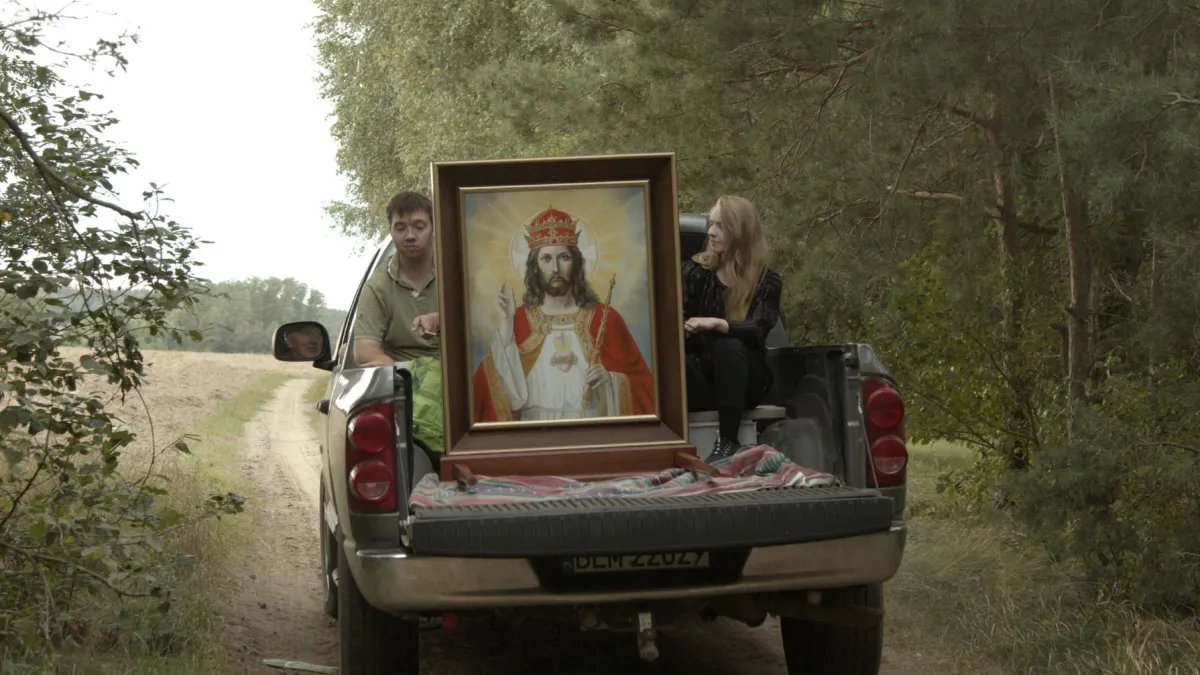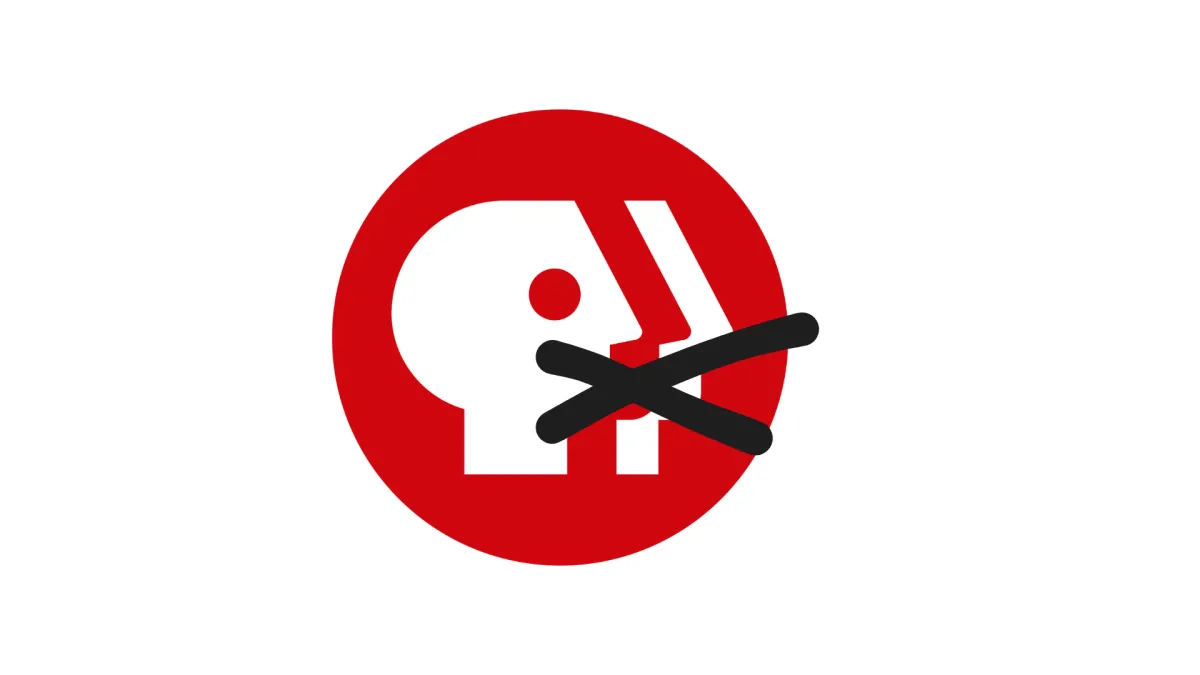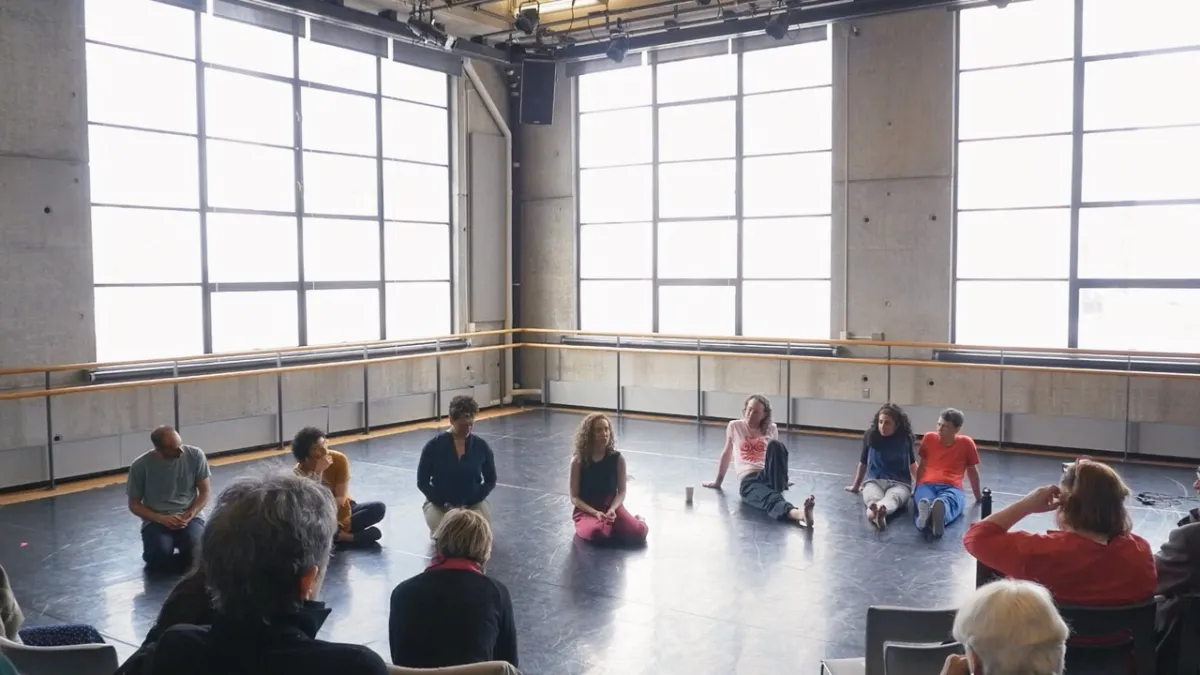
“Haunts the Present”: Kinga Michalska on Connecting the Holocaust With Poland’s Migrant Crisis in ‘Bedrock’

Courtesy of Berlinale
Amid the past few decades of Holocaust-focused works, queer artist Kinga Michalska has found a unique approach to “the Holocaust memory documentary” in their native Poland. Their feature-length debut, Bedrock, is a psychological journey through the contemporary sites of former concentration camps and mass graves. It leads the audience through energetically charged landscapes, cinematically evoking the almost mystical, palpable past. Through the observation of the people living there today, the film offers a broad perspective on what it means to live a normal life after genocide, displacement, and unimaginable loss. It also poses the rhetorical question: What does “never again” really mean?
This question becomes all the more uncomfortably timely as the past begins haunting the present, drawing associative parallels between the Holocaust and the migrant crisis at Poland’s border. Nevertheless, the film sustains a remarkably varied tone, accommodating tragic commemorations, irony, and scepticism alike. Through this eclectic relationship with past and present, Michalska turns inward toward their national identity, questioning if Poland can see itself not only as a victim, saviour, and witness, but also as a perpetrator.
Bedrock premiered in the Panorama section at the Berlinale, where Documentary spoke with Kinga Michalska. The film is currently on a festival tour after its Canadian premiere at DOXA and an extensive Polish run as part of Millennium Docs Against Gravity. This interview has been edited for length and clarity.
DOCUMENTARY: As someone who emigrated from Poland and is not Jewish, what was your initial connection to the research subject?
KINGA MICHALSKA: I was born and raised in Poland and moved to Canada when I was 21. I grew up in a fairly liberal family and was taught about the Holocaust in school, but the knowledge given was pretty basic. When I was younger, I would visit Holocaust museums or simply find myself near the sites of former concentration camps, and I often thought about what it meant to be in a place so heavily burdened by murder, and how one was supposed to process and reflect on it.
In my mid-twenties, I went to Poland with my friend to visit Holocaust sites, and there was a mass grave in the middle of a forest. We arrived while a small ceremony was taking place to commemorate the site for the first time. This experience really marked me. At first, it felt like I was just walking into a forest where there was nothing. Then, all of a sudden, two men put little stones on the ground in a rectangular shape to mark the grave, and everything became tangible. One of them was Filip Szczepański, a young Polish Jew who became a protagonist in my film and showed me a Poland I had never seen. At this commemoration, there was also a local community, and among them was an elderly woman who was remembering the people who lived there and lying in that grave all these years with no gravestone. That day, I learned that there are thousands of places like this. We all sort of know that Poland is the cemetery of European Jews, but it always felt abstract until I started visiting these sites and learning about their history. That experience also left me feeling ashamed. How could I not have known this?
Then I began researching different camps. Of course, I knew about Auschwitz and Treblinka, but there were large camps. Little do we know that these major camps also had subcamps. Auschwitz had a gigantic territory with over 100 subcamps, and what we see in the museum today is just a tiny part of it. So I was struck by the extent of the material traces of the Holocaust in our country. Because I used to understand it as a metaphor of something bad happening here, but as I explored this architecture, I began to realize deeply that people were murdered in this horror.
D: Watching Bedrock, it’s hard not to draw parallels with Claude Lanzmann’s Shoah—not only in the way both travel through contemporary landscapes to explore the Holocaust’s past, but also in the performative efforts to connect with heroes. Yet, while Lanzmann incorporated himself into the narrative, you take a more observational approach. Could you talk about how you arrived at that technique?
KM: I tried different ways and started with a more diaristic, maybe even Lanzman-like approach. The initial idea was to make myself more present, but in the end, it was far too intense for me and for the film. I just realized that I’m going to be in the film anyway, because it’s my look at Poland and my decisions in editing, and I didn't feel the need to put myself in the story anymore. I think it was better to have a little more distance with such a heavy subject, and also to leave more space for the place and its heroes.
I always worked in a way that I met the protagonists, interviewed them, and together we decided what would be a good way to represent them. How can we film a certain moment in their life, or just be with them even in banal activities, or maybe stage certain situations within a realm of what is possible and feels good.
D: I assume that it took you some time to find the approach to people, because as we can see, many of them are absolutely not enthusiastic about talking about the Holocaust.
KM: In general, I have an ease of connecting with people, but this subject is still sensitive in Poland. It was quite difficult to find people who wanted to talk, and even harder to find those who wanted to talk on camera. I am grateful to those who had the courage and trusted me with their stories. But of course, there were places where it was impossible. For example, we really wanted to film in Szczuczyn, a town where Poles committed a series of pogroms against their Jewish neighbors. It’s one of the most extreme examples and to this day there’s a heavy pact of silence in the town. I tried to find a protagonist there, and it was absolutely impossible to get people to talk. Everyone was just petrified, which was really sad and also humbling for me to realize how many generations still live in such fear.
D: Your film exudes a haunting sense of presence, capturing an invisible but overwhelming emotional weight in the landscapes you depict. How did you deal with this intensity while filming, and how did you manage to convey it on screen?
KM: I wanted to speak not only about the Polish experience of living in these places, but also about the experience of people being blinded by something that is ubiquitous. I wanted to show a reality that was invisible to me as I was growing up.
At some point during the filming, I started to see graves everywhere. So it was easy to go crazy, and I had to balance it in the film. That is something we tried to evoke through the sound, through the visual language of the film, and associative editing. The feeling that there's something in the air or something haunting about this place. But again, this is my feeling, because some of the protagonists said they felt nothing, and I trust their experience. So I wanted to create a space for different feelings about this past.
D: What I also appreciate about your film is that you don't stop with the tragedies of the past, but extend them to the present, which is the migration crisis at the Polish-Belarusian border. Can you talk about that decision and also about the origin of the thermal camera footage from that border?
KM: I definitely didn’t plan this, and we started shooting way before the beginning of the humanitarian crisis. But as we were filming in Eastern Poland in 2022, a massive wall topped with barbed wire was erected at our border. It really scared our whole team, like, how is this even possible? People from Syria, Somalia, Ethiopia, Sudan, to name a few, are escaping horrible realities, and when they get to the border of the EU, they are met with violence and torture first on the Belarusian side and then pushed back to Poland, where the same thing continues. All this just activated this very clear association of images of Jews hiding in the woods during World War II.
While these contemporary atrocities and those of the Holocaust are different and incomparable, the border storyline in the film serves as a warning—the Holocaust didn’t start with gas chambers. It started slowly and was executed as a series of more and more extreme laws and policies of the Nazi government. Today, it is beyond alarming that the Polish liberal government suspends the right to asylum and punishes citizens for helping. Currently, a group that gave water and food to the migrants is facing up to 5 years in prison. So it was just clear that we had to implement these narratives because the reality itself dictated it.
I discovered the thermal camera footage on the official YouTube channel of the Polish Border Guard. I guess they publish it to advertise how well they protect the borders. Those clips have terrifying music, as if it were a horror movie, which was pretty crazy to see later in Jonathan Glazer’s The Zone of Interest [which similarly uses thermal cameras]. I decided to open and end my film with these shots, which at first resemble archival footage from wartime, but eventually we realize that we see contemporary footage of migrants at the border being chased by armed guards into the woods. I didn’t want to leave my viewer with a painful but familiar story of World War II, I wanted to show how the past haunts the present.
The urgency of my film is rooted in its specific Polish context but also urges reflection on the world around us, where alt-right nationalism, fascism, and white supremacy are on the rise, and crimes against humanity are committed in plain sight. And having this film released when a genocide is happening in Gaza has been particularly heartbreaking and affirms the importance of remembering and understanding the past.
D: Lastly, I wanted to mention that your film does not have a Polish co-production. Does it have to do something with the government?
KM: Unfortunately, we don’t. Although I have an executive producer and mentor from Poland, Anna Gawlita, it doesn’t qualify as a full co-production. At the time, Poland was under an alt-right government, which made things difficult. I was really disappointed—it felt wrong that this couldn’t be a Polish co-production. To me, it made absolutely no sense to fly in a Canadian crew when there are excellent professionals in Poland who not only have the skills but also the language connection and deeper understanding of this subject, which is so crucial for this film. Thankfully, even as a Canadian production, we managed to work with a Polish DP, Hanna Linkowska, and I am very happy about it.
Sonya Vseliubska is a Ukrainian film journalist based in London. She is a staff writer for Ukrainska Pravda, the leading online newspaper in the country. Sonya’s writings on film have also been featured in Modern Times Review, Talking Shorts, Kyiv Independent, and Klassiki Journal, among others.




